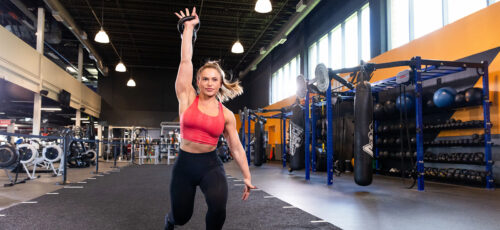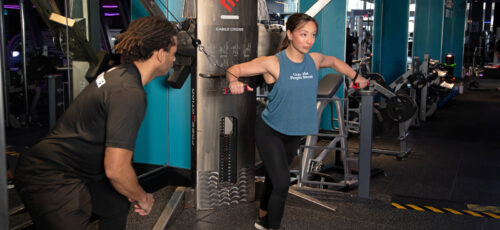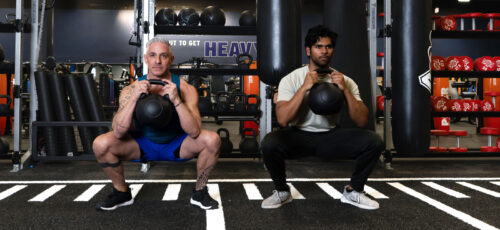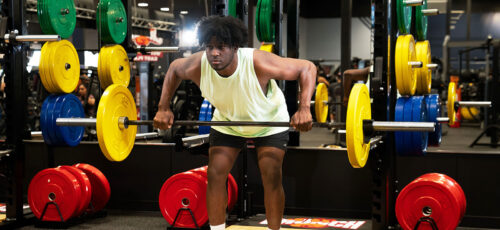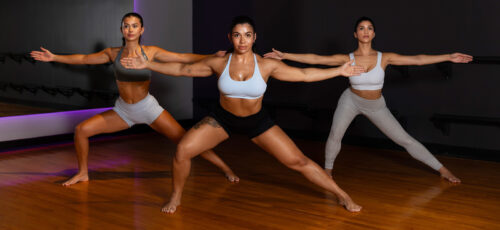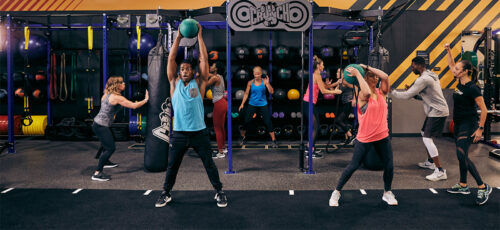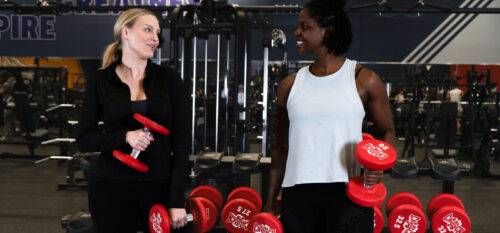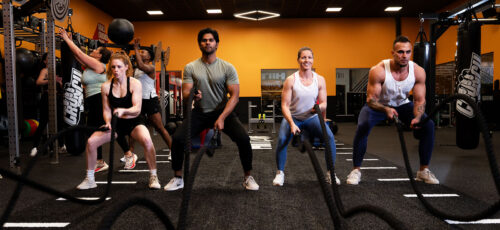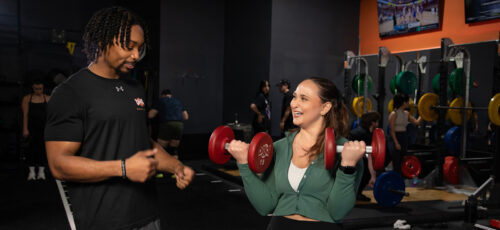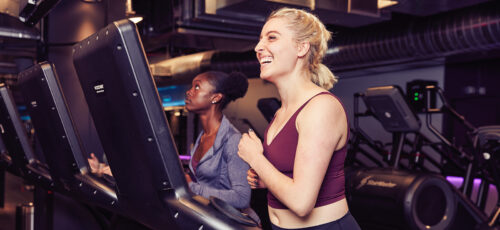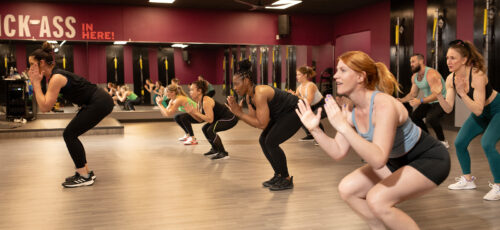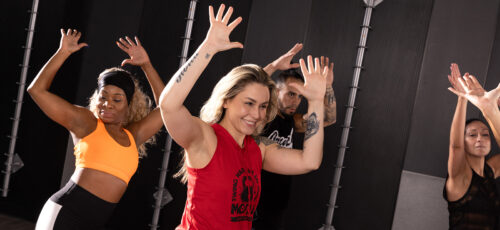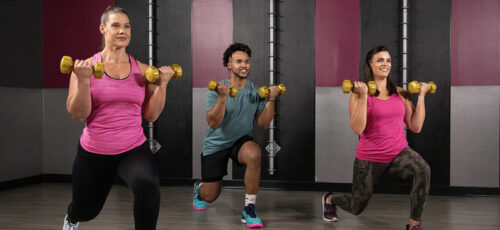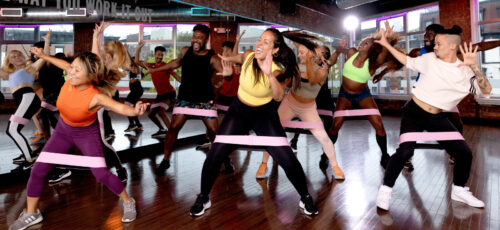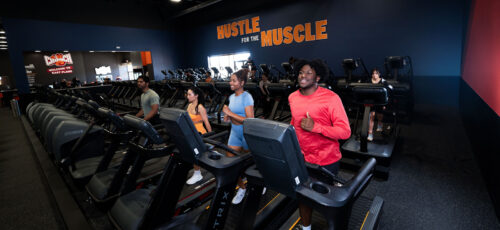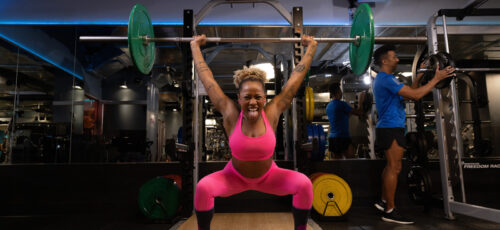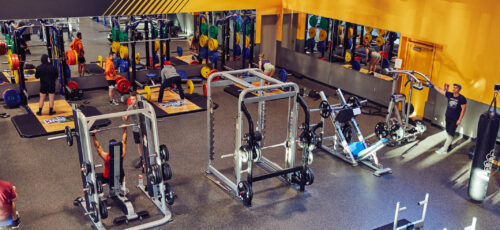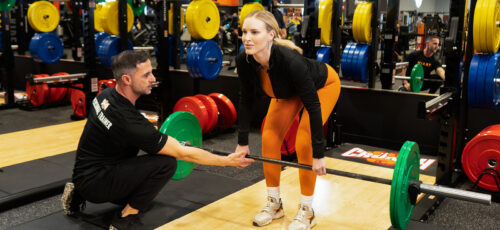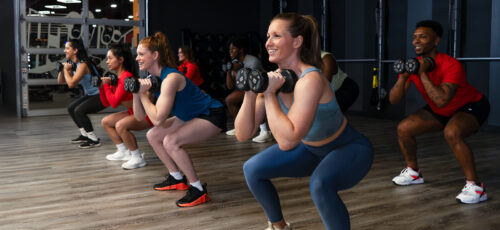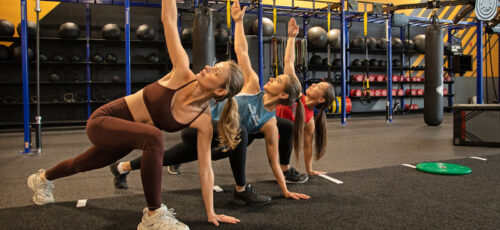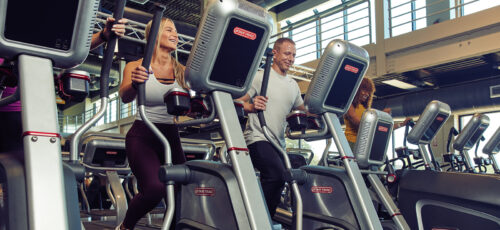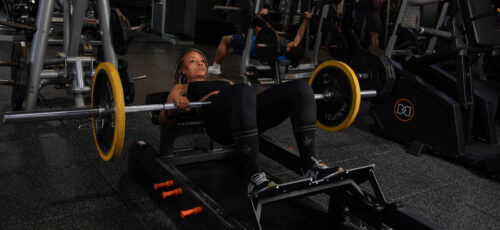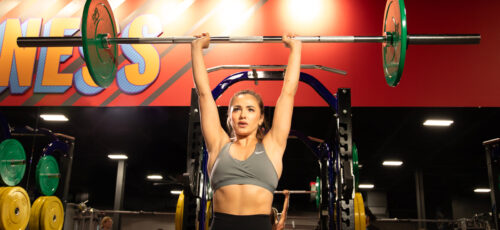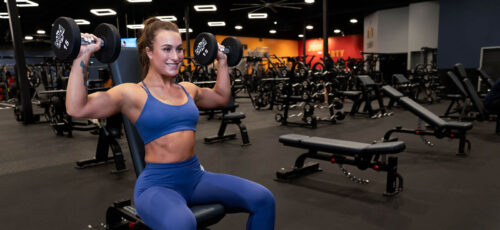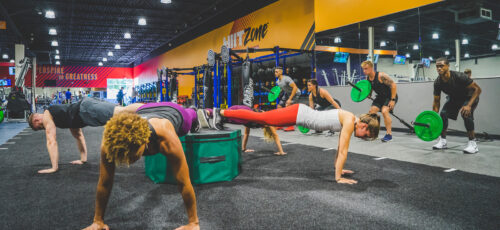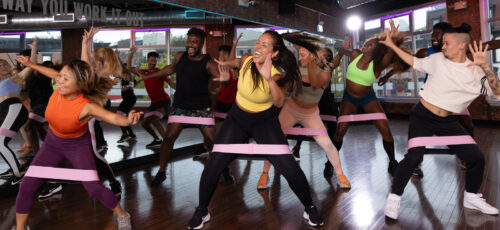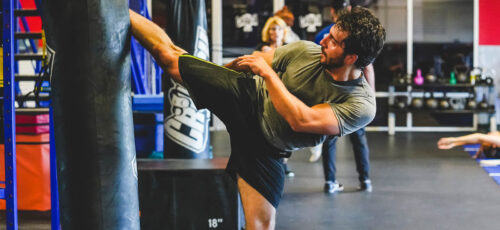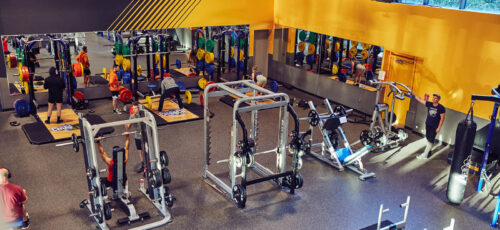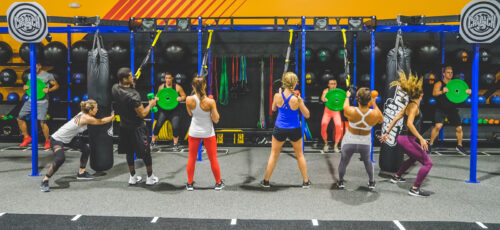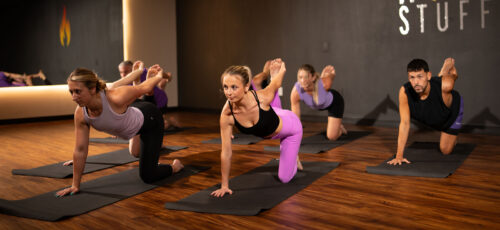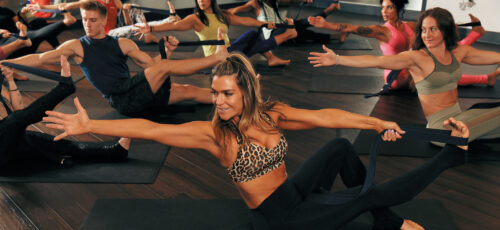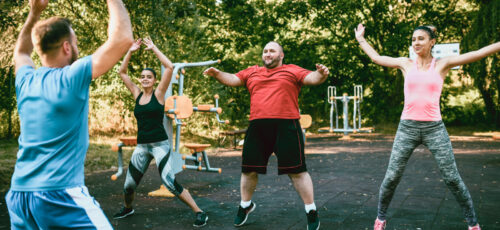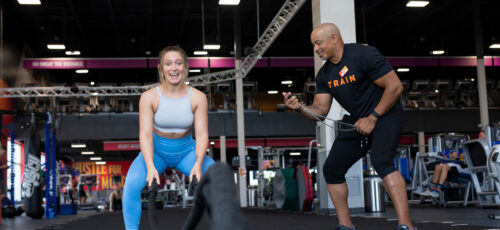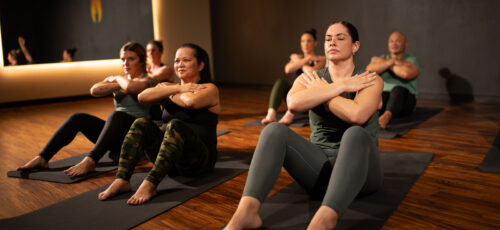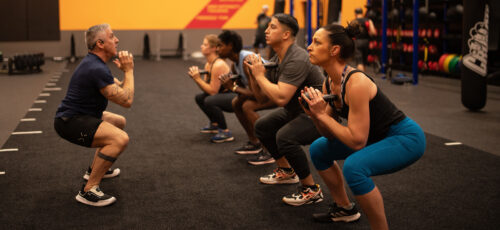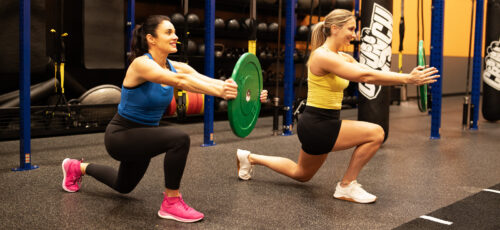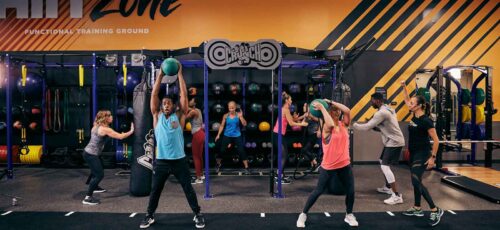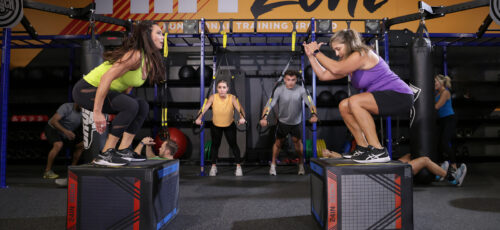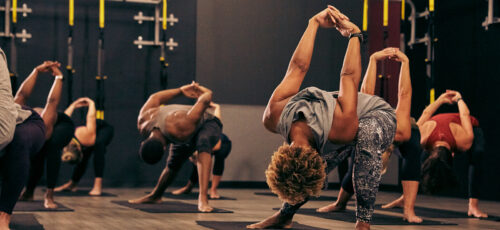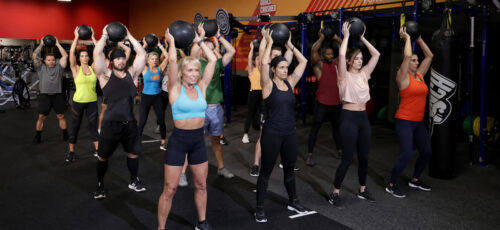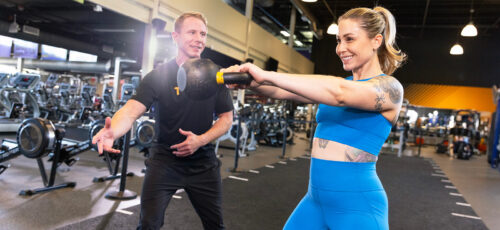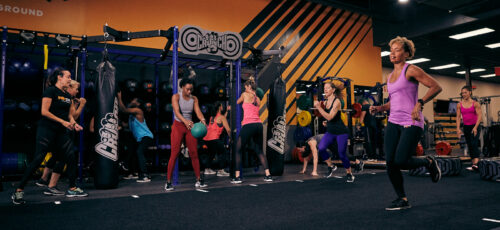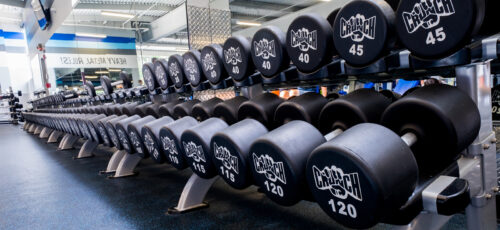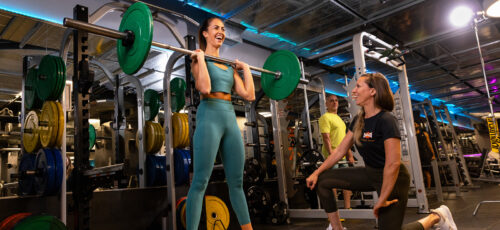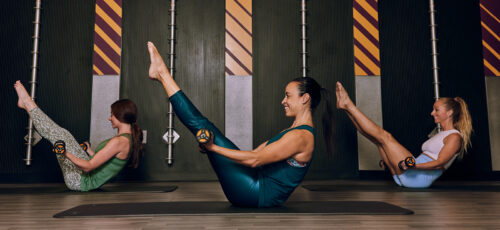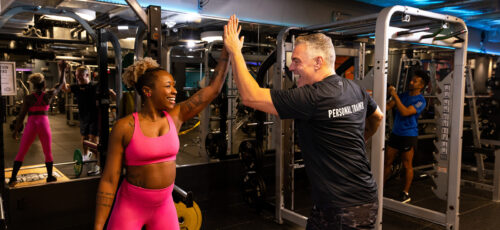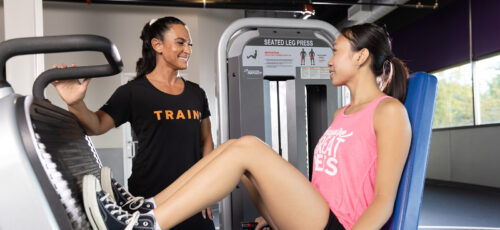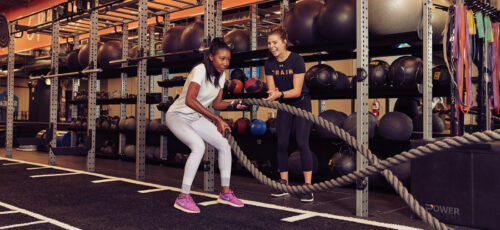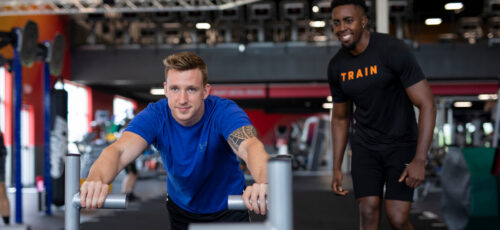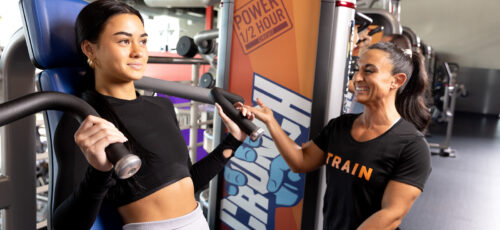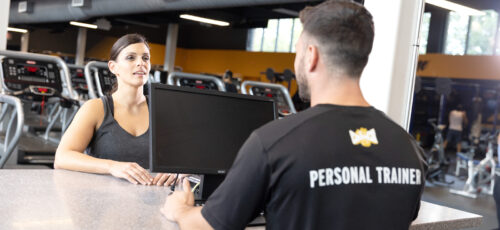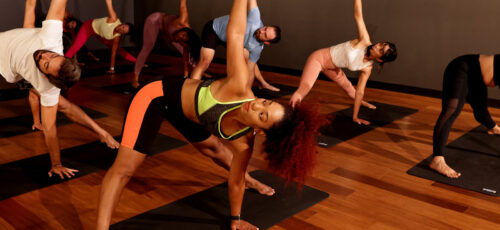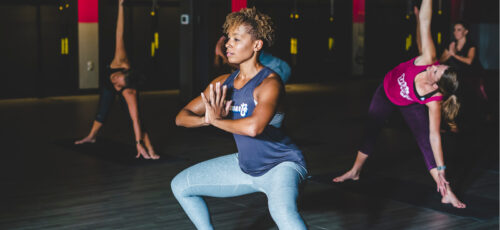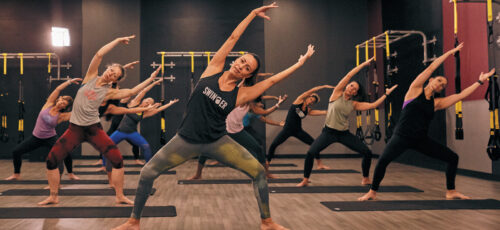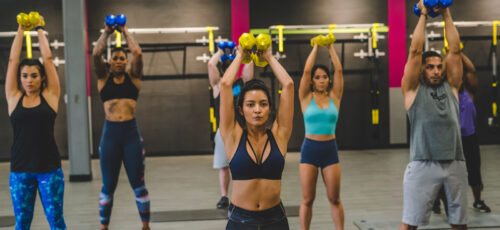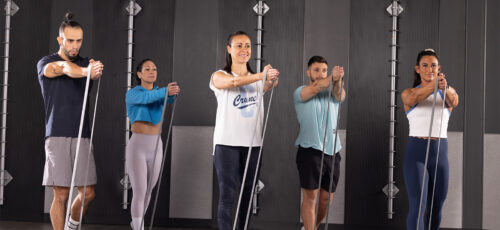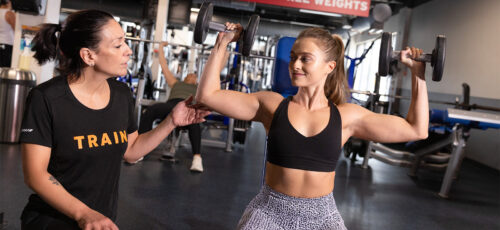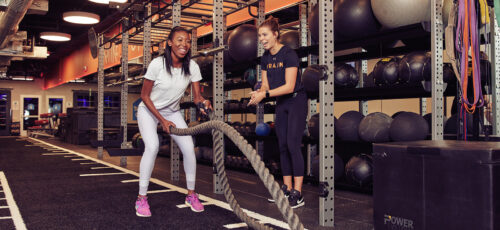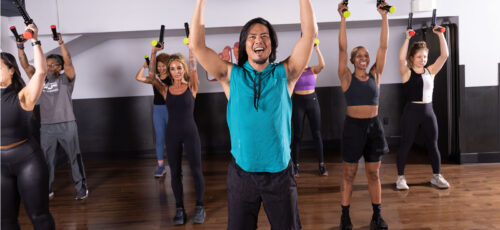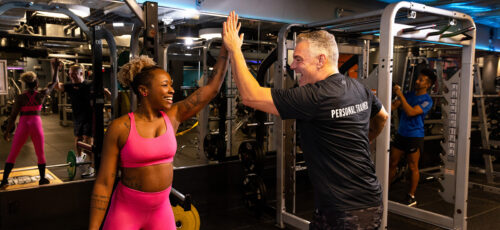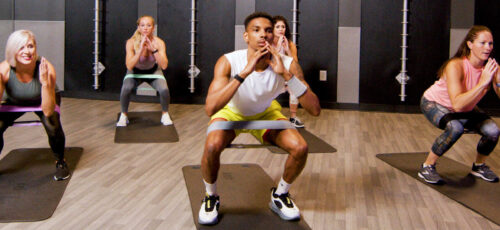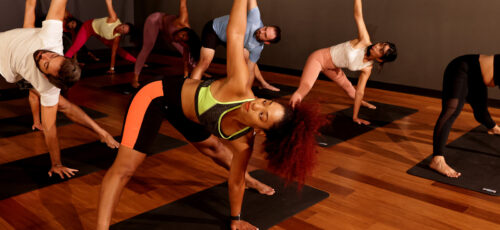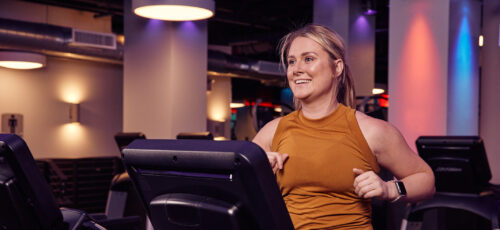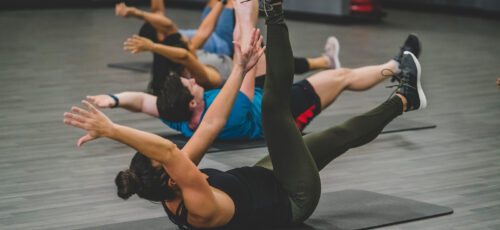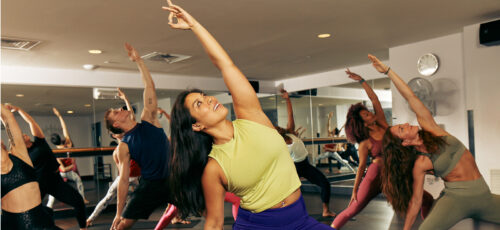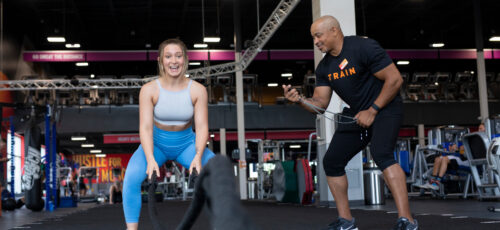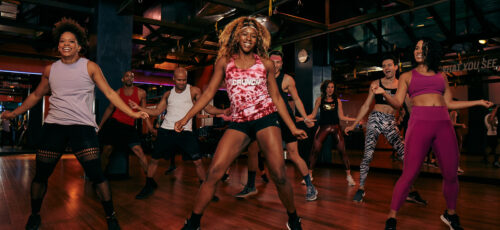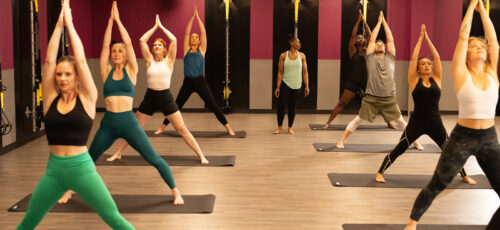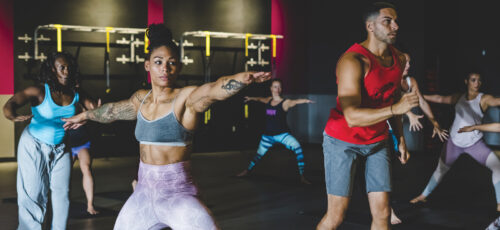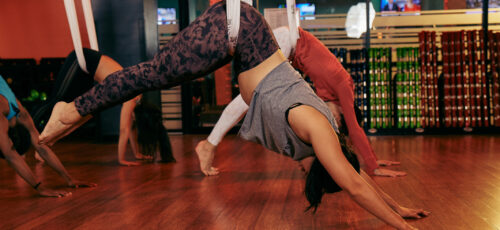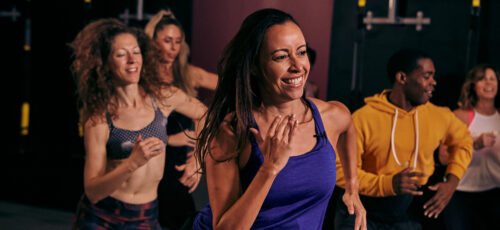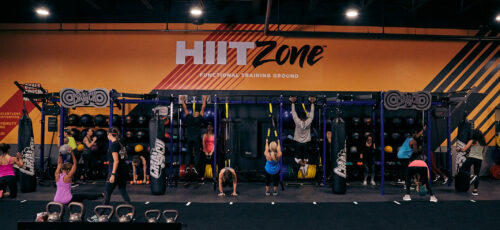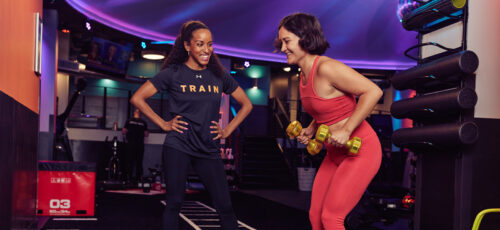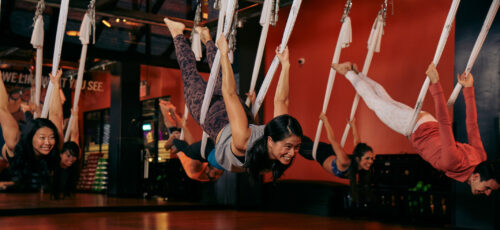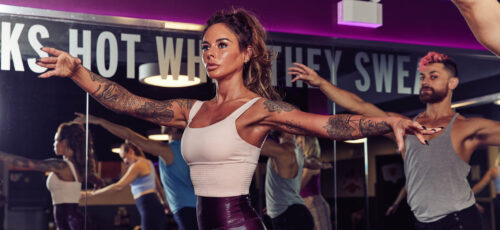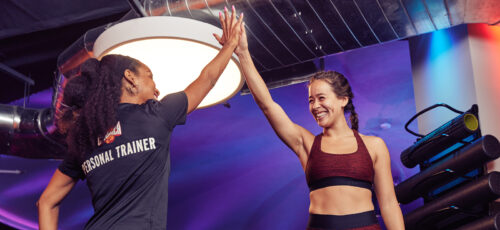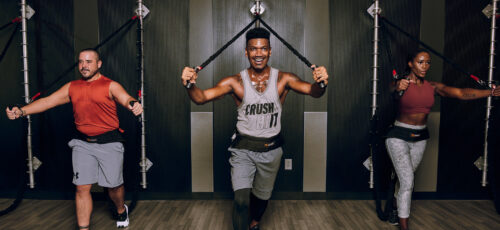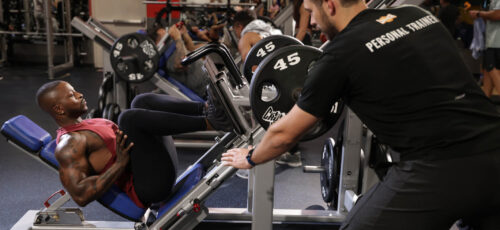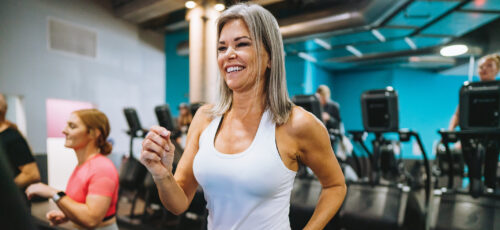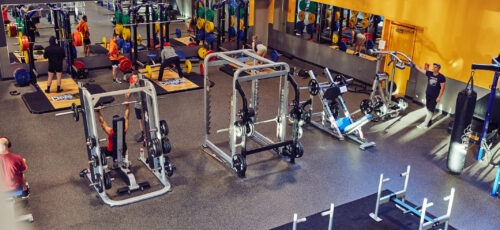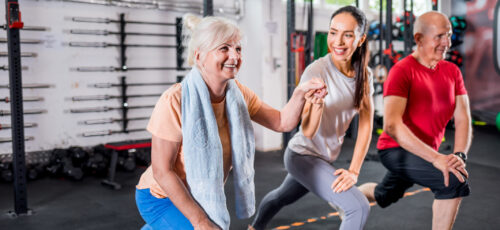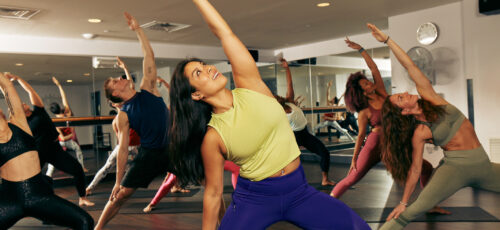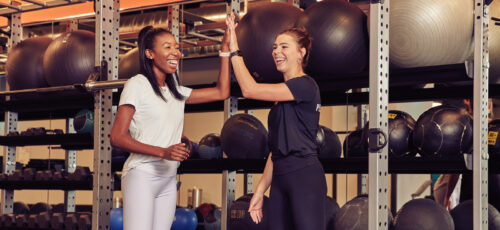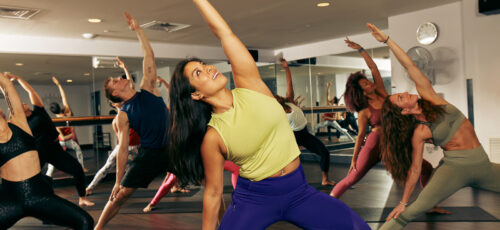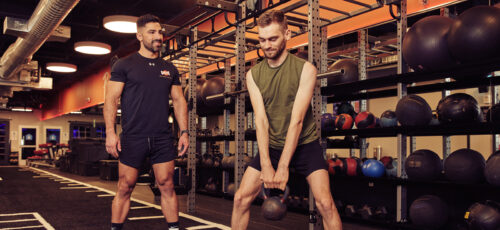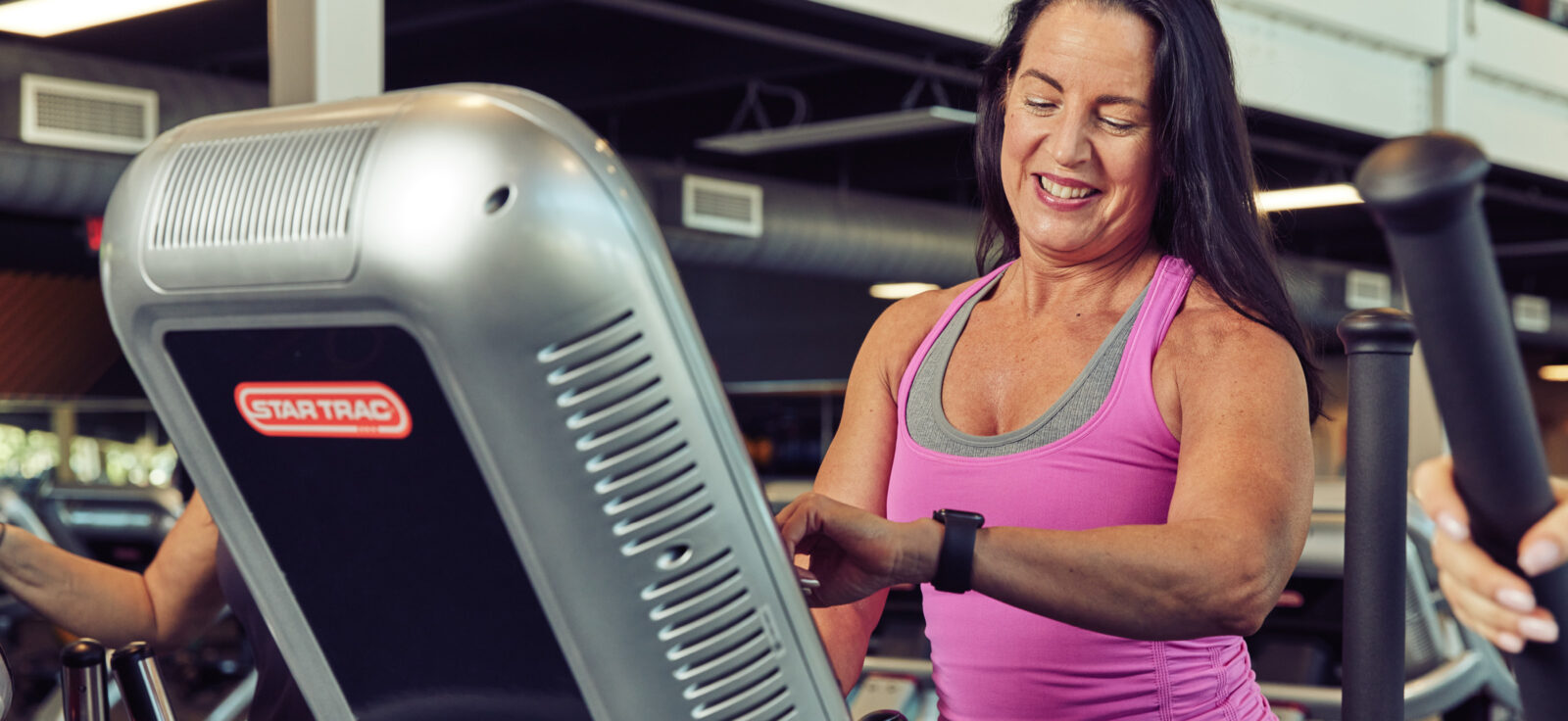
Whenever we decide to join group fitness classes, we must remember that only some classes will be the same.
Each group class has a particular goal based on the intensity level, type of training session, personal trainer, or coach, among other factors.
In this article, we’re here to break it down for you. We’ll discuss just how hard these group fitness classes can be, the different intensity levels, the benefits each type of class offers for your physical and mental health, and the factors that can influence your experience.
By the end, you’ll have a clearer idea of whether you’re ready to crush that high-intensity interval training class—or if maybe a low-key Pilates session is more your speed.
Understanding Group Exercise Classes: 3 Powerful Levels
When someone discusses the intensity levels of a fitness class, they refer to how hard their body works during physical activity. Factors such as their fitness goals, health, and current fitness level are essential in determining their ideal class level.
We can typically identify three levels: Low, Moderate, and High. To classify a group fitness class into each energy level, it is advisable to employ three distinct methods for assessing the intensity of a group fitness class:
- Exertion rating scale
- Talk Test
- Target heart rate
- Exercise routine
Methods for Assessing Intensity Levels
To determine which intensity level is appropriate for you, using a few methods to assess how your body responds during a workout is helpful. These methods can give you a clear idea of whether you’re working at a low, moderate, or high intensity:
Exertion Rating Scale (RPE – Rate of Perceived Exertion)
Also known as the Rate of Perceived Exertion (RPE), this scale allows you to subjectively rate how hard you feel you are working during a workout. On a scale of 1 to 10, low intensity might feel like a 3 or 4, moderate intensity around a 5 or 6, and high intensity might reach an 8 or 9.
Talk Test:
The talk test method assesses your ability to converse during exercise. In a low-intensity class, you should be able to speak comfortably. In a moderate-intensity class, you can still talk, but with some effort. In a high-intensity class, talking may become difficult due to heavy breathing.
Target Heart Rate:
Monitoring your heart rate during exercise is a more objective to gauge intensity. According to the American Heart Association, for moderate-intensity workouts, aim for 50-70% of your maximum heart rate, while high-intensity workouts should push your heart rate to 70-85% of its maximum.
Exercise Routine:
The structure and nature of the exercise routine can also indicate the intensity. Exercises that involve quick, explosive movements or heavy resistance often indicate higher intensity, whereas slow, controlled movements typically signify lower intensity.
Strength Levels in Group Exercise Classes
When considering the strength or intensity of a group exercise class, several factors come into play beyond just the type of workout.
While the specific class format (like HIIT, yoga, or circuit training) largely dictates the general intensity, additional external conditions significantly influence how challenging the class will feel.
These conditions include the instructor, the participants, class format, duration, and routine.
Instructor influence
The instructor responsible for the group class training session is a significant variable in determining the hardness level.
For example, a highly experienced instructor familiar with advanced training techniques might push participants harder, incorporate more challenging movements, or offer fewer breaks, increasing overall intensity.
The power can vary depending on the class’s objectives, the instructor’s experience and expertise, and the difficulty level the trainer chooses for the workout routine.
Several group fitness classes might offer an excellent fitness program, but if the instructor is not familiar with the class methodology, the group can be at a disadvantage.
A good instructor will be able to estimate the class’s overall fitness level and adjust the routine to ensure everyone is working at a challenging yet manageable pace.
Participants of the Class
Believe it or not, the participants who choose to work in the class can also play a crucial role. Depending on each person’s fitness level, experience, and effort, the intensity of the class can be perceived differently. The group’s atmosphere and energy levels can also influence this perception.
For example, a class filled with highly motivated, fit people can push everyone to work harder, creating a more intense environment. On the other hand, if the group has complete beginners or those with lower fitness levels, the class might progress at a slower, more moderate pace.
Class Format, Duration, and Routine
Each exercise group follows a distinct format aligned with the class’s goals. Factors such as duration and type of routine are determined and implemented to achieve the class’s objectives.
For example, a HIIT class is structured around short bursts of high-intensity effort followed by brief rest periods, making it more intense than a steady-state cardio class.
Another essential factor is the duration of the class. A more extended class with sustained effort will naturally be more demanding than a shorter session.
Additionally, the type of routine and exercises chosen by the instructor—heavy lifting, cardio bursts, or bodyweight exercises—will directly impact the strength and endurance required to complete the class.
Now that we have discussed all levels and the factors that contribute to the difficulty level of group fitness training, it’s time to provide some examples for each difficulty category.
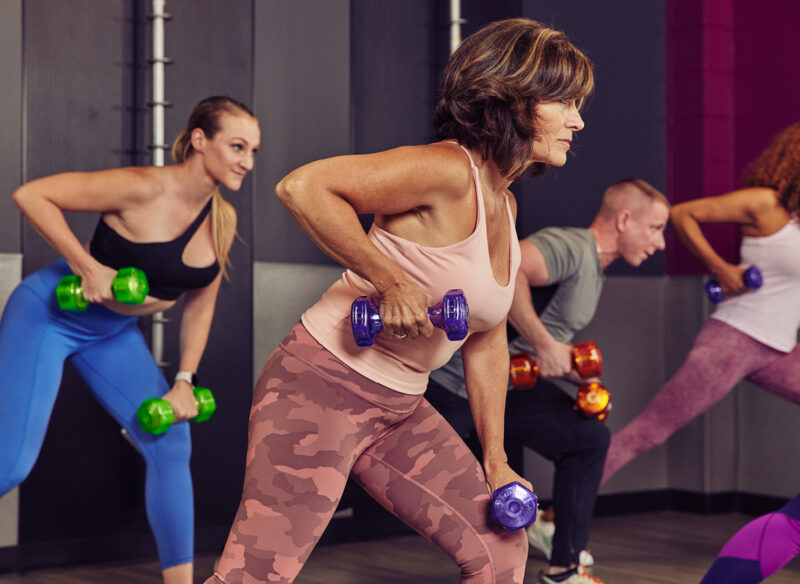
High-Intensity Group Classes
High-intensity group classes are ideal for gym users with prior experience in workout routines and considerable time spent training at a moderate level. The goal is to challenge you, push your body to its limits, and provide an experience of a high-energy, intense routine.
Two popular examples of high-intensity group classes are High-Intensity Interval Training and CrossFit. HIIT classes involve short bursts of maximum-effort exercises followed by brief rest periods.
This approach is designed to keep your heart rate elevated and maximize calorie burn in a short amount of time. On the other hand, CrossFit, a versatile fitness regimen, combines elements of weightlifting, cardio, and functional movements to create a comprehensive workout that targets multiple muscle groups.
Both classes provide full-body workout routines that blend strength and aerobic exercises, making them ideal for pushing your capabilities and helping you achieve your fitness objectives.
While these classes are highly effective, they are also intense and can be demanding on the body. Therefore, if you are new to fitness or have little experience with high-intensity workouts, starting with a gradual progression is advisable.
Build a solid fitness base with moderate-intensity exercises before moving on to these more challenging routines. This gradual approach helps prevent injury and allows your body to adapt to the increased demands of high-intensity training.
While anyone can try high-density group classes, we recommend starting with a gradual progression if you are new to the fitness world or have little experience.
Some benefits of intense group classes include the following:
- Increases Strength: It challenges muscles with resistance and weight-bearing exercises, leading to significant strength gains.
- Improves Cardiovascular Health: It keeps your heart strong and enhances overall endurance.
- Burns High Fat Percentages: It is effective for burning calories and reducing body fat, with continued calorie burn even after the workout (afterburn effect).
- Enhances Endurance: Builds stamina by pushing your body to sustain intense efforts over time.
- Boosts Metabolism: High-intensity workouts can elevate your metabolic rate, helping you burn more calories throughout the day.
- Promotes Mental Toughness: These challenging classes help build mental resilience and the ability to push through physical limits.
- Time Efficiency: Offers a comprehensive, full-body workout in less time than lower-intensity classes.
- Varied Workouts: Incorporates different exercises and movements, keeping the routine dynamic and engaging.
Moderate Intensity Group Fitness Class
Moderate-intensity group fitness classes are an excellent choice for individuals looking to engage in a balanced workout that challenges them without pushing their bodies to the limit.
These classes enhance overall fitness levels, making it easier for participants to eventually progress to more intense workouts.
The goal is to provide a comprehensive training session that is both enjoyable and effective, allowing gym users to improve their fitness with less strain and stress.
Examples of moderate-intensity group classes, such as cycling and circuit training, offer a variety of exercises that keep the workout interesting. You can expect to break a sweat during these sessions, and your breathing rate will increase.
However, you should still be able to hold a conversation, which is a critical indicator that you’re working out at a moderate intensity. This level of exertion strikes a balance between low-intensity activities, which might not challenge you enough, and high-intensity workouts, which could be too demanding, especially for newer participants.
Moderate-intensity classes are particularly beneficial for new gym users who want to try a more challenging workout without taking unnecessary risks.
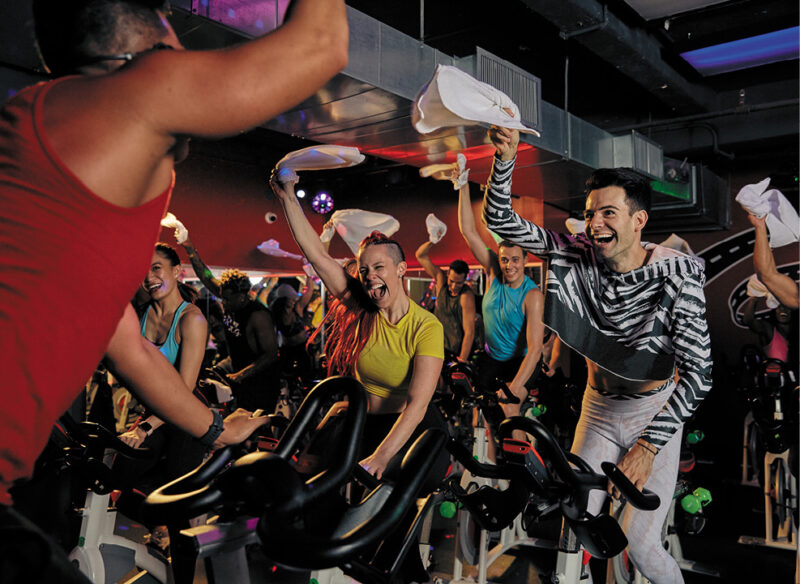
These classes are adaptable for all fitness levels, providing an opportunity to build strength, improve endurance, and enjoy getting fit without the intimidation factor of more intense classes.
Some benefits of moderate-intensity group classes include:
- Reduces the Risk of Major Medical Conditions: Regular moderate exercise can lower the risk of chronic diseases such as heart disease, diabetes, and hypertension.
- Improves Sleep Disorders: Engaging in moderate-intensity workouts can help regulate sleep patterns, making it easier to fall asleep and enjoy more restful sleep.
- Supports Better Brain Function: Moderate exercise has been shown to enhance cognitive function, improve memory, and even reduce the risk of cognitive decline as one ages.
Low-Intensity Group Classes
Low-intensity group fitness classes are perfect for people just beginning their fitness journey, especially those without prior experience. Still, they are also suitable for participants of all levels looking to maintain or improve their physical and mental health.
These classes provide a gentle introduction to exercise, offering the essential tools and foundational elements needed to build strength and gradually progress to more challenging fitness levels.
The focus is on developing a solid fitness base while enjoying the process, making it an excellent starting point for anyone new to working out.
Examples of low-intensity group classes include yoga, pilates, martial arts, and gentle aerobics. While these classes may not be as physically demanding as moderate or high-intensity workouts, they are still highly effective in promoting overall fitness.
Participants will engage in functional movements, build strength, and improve their physical conditioning in a comfortable and supportive environment.
Some benefits of low-intensity group fitness classes include:
- Stress Reduction: Engaging in low-intensity exercises like yoga and Pilates helps to lower stress levels, promoting a sense of calm and relaxation.
- Relaxation: These classes often incorporate breathing exercises and mindfulness techniques, which can lead to a deep state of relaxation and mental clarity.
- Lower Blood Cholesterol and Sugar Levels: Regular participation in low-intensity workouts can help improve cardiovascular health by lowering cholesterol and stabilizing blood sugar levels.
- Improves Flexibility: Low-intensity exercises like yoga and Pilates are particularly effective at increasing flexibility and range of motion, which is beneficial for overall mobility and injury prevention.
- Enhances Balance and Coordination: Many low-intensity exercises focus on controlled movements, which help improve balance and coordination.
- Boosts Mental Health: These classes’ mindful nature can enhance mental health, reducing symptoms of depression and anxiety while promoting a positive outlook.
- Supports Joint Health: Low-impact movements are gentle on the joints, making these classes ideal for individuals with joint issues or those recovering from injury.
- Increases Core Strength: Many low-intensity workouts emphasize core stability, which can lead to improved posture and reduced risk of back pain.
- Promotes Healthy Aging: Regular low-intensity exercise can help maintain strength, flexibility, and overall vitality as one ages.
Strategies for Safe Intensity Progression
Progressing through different intensity levels in group fitness classes is a great way to improve your overall fitness, but it’s essential to do so safely and gradually.
Jumping too quickly into higher-intensity workouts can lead to injury, burnout, and frustration. By understanding how to progress through these levels effectively, you can maximize the benefits of your workouts while minimizing the risks.
1. Start with a Solid Foundation
Before advancing to more intense classes, it’s essential to establish a solid fitness foundation. This foundation includes developing proper form, building baseline strength and endurance, and understanding your body’s limits.
Low-intensity group fitness classes, such as yoga, Pilates, or gentle aerobics, are perfect for beginners or those returning to exercise after a break. These classes help you develop the flexibility, balance, and core strength needed for more demanding workouts.
Starting at a lower intensity allows your body to adapt to the physical demands of exercise, reducing the risk of injury. It also provides an opportunity to learn correct techniques, which are crucial when you begin more intense workouts.
2. Gradual Increase in Intensity
Once you’ve built a strong foundation, you can gradually increase the intensity of your workouts. This progression should be systematic and aligned with your individual fitness goals.
For example, if you’ve consistently attended low-intensity classes and feel comfortable, you might try incorporating moderate-intensity courses, such as cycling or circuit training.
If you find the transition challenging but manageable, you’re likely progressing healthily. However, if you experience excessive fatigue, soreness, or struggle to keep up, it might be a sign that you need more time at your current level before moving on.
3. Incorporate Recovery and Rest
As you increase the intensity of your workouts, it’s crucial to balance this with adequate recovery. High-intensity workouts are more taxing on the body and require sufficient rest to allow muscles to repair and grow stronger.
Incorporating rest days or active recovery sessions, like low-intensity yoga or walking, can help prevent overtraining and reduce the risk of injury.
Recovery is not just physical; it’s also mental. Intense training can be mentally draining, so resting can help you stay motivated and avoid burnout.
4. Monitor Your Progress
Tracking your progress is an integral part of safely progressing through intensity levels. Pay attention to how your body responds to different workouts.
Can you complete the exercises in good form? Do you recover well after sessions? Monitoring your heart rate, energy levels, and overall performance can give you valuable insights into whether you’re ready to advance.
5. Consult with a Personal Trainer
If you’re unsure how to progress through intensity levels safely, consider consulting with a fitness professional.
A personal trainer or group fitness instructor can assess your current fitness level and design a program that allows for safe, gradual progression.
They can also guide proper technique, help you set realistic goals, and offer modifications to make workouts more manageable as you build strength and endurance.
6. Listen to Your Body
Above all, listening to your body throughout your fitness journey is crucial. Pain, discomfort, or excessive fatigue are signs of pushing too hard.
While feeling challenged during a workout is normal, you should never feel like you’re pushing beyond your safe limits. Progression should feel gradual and sustainable, not forced or rushed.

Group Fitness Classes World
Group fitness classes offer an enjoyable and dynamic approach to efficiently pursuing your fitness goals. That’s why we encourage you to try out every category level and class you’re interested in experiencing.
By incorporating various types of classes, you can enhance your workout routine and improve different fitness aspects, which contribute to an even better overall experience.
Crunch’s group fitness classes promote a culture of fun with no judgments. It’s an environment for all types of individuals with various goals. Find a Crunch gym near you to try our free trial membership, or join Crunch now. Your goals are made to be crushed. With Crunch, you’ll have the tools, resources, and support to make it happen.
FAQ
If I am starting a fitness lifestyle, what should I do?
Ask a personal trainer or team member to help you find the perfect fit for your needs and fitness goals. They will help you have the best experience possible.
Should I go to the classes daily?
Even though it is important to be consistent with your routine and workout sessions, it is also important to listen to your body. Now and then, it is okay to just rest and give yourself a break so that you can keep working on your fitness goals healthily and correctly.
Is the group environment important?
Yes, group settings and environments will always be crucial elements in every workout class. To develop intrinsic motivation in the class members, a warm class setting and a functional fitness routine must create a positive experience in the class environment.
How do I know which intensity level is right for me?
The right intensity level depends on your fitness level, experience, and goals. If you’re new to exercise or returning after a break, starting with low or moderate intensity is advisable. As you build strength and endurance, you can gradually move to higher-intensity classes. It’s important to listen to your body and consult a fitness professional if you need clarification.
Can beginners join high-intensity classes?
While beginners can join high-intensity classes, starting with lower or moderate-intensity workouts is generally recommended. High-intensity classes are designed for those with a solid fitness foundation and can be very demanding. Beginners may find these classes overwhelming or risk injury if not properly conditioned.
How do moderate-intensity classes differ from low and high-intensity classes?
Moderate-intensity classes balance the gentleness of low-intensity and the challenge of high-intensity workouts. They elevate your heart rate and induce sweating, but you should still be able to converse. These classes are designed to improve cardiovascular health, build strength, and prepare your body for more intense workouts.
What are the signs that are too intense for me?
If you find it difficult to catch your breath, cannot maintain the exercises, or experience dizziness or pain, these are clear signs that the class may be too intense for you. It’s important to recognize these signs and consider adjusting the intensity or choosing a different class that matches your fitness level better.
How can I safely progress to higher-intensity group fitness classes?
To safely progress to higher-intensity classes, consistently attend moderate-intensity workouts to build strength and endurance. Gradually increase the intensity and duration of your workouts as you feel more comfortable. Working with a personal trainer who can guide your progression and ensure you use the proper form to prevent injury is also helpful.
What should I do if I feel overwhelmed or unable to keep up during a class?
If you feel overwhelmed or unable to keep up during a group fitness class, it’s important to listen to your body and take a break if needed. You can reduce the intensity by slowing your movements, using lighter weights, or skipping more challenging exercises. It’s also perfectly fine to step aside and rest or leave the class early if you feel unwell. Remember, fitness is a personal journey, and it’s important to progress at the right pace.
Crunch promotes a culture of positivity, inclusivity, and fun with no judgments by providing an environment for all individuals regardless of their health and fitness goals. Find a Crunch gym near you to try our free trial membership, or join Crunch now. We’re here for you – at the gym or at home. Access the best live & on-demand workouts anytime, anywhere with Crunch+. Ready to get sweaty? Try hundreds of workouts for free! Start your free trial now!











